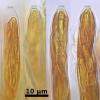
20-12-2025 23:08
Patrice TANCHAUDBonsoir, récolte sur sol sablonneux dans l'arri�

20-12-2025 15:47
Mirek GrycHi.These grew on pine wood that was heavily covere

18-12-2025 21:17
Pol DebaenstThe identification took me to Byssonectria deformi

15-12-2025 07:09
 Danny Newman
Danny Newman
indet. Rutstroemiaceae sp. on unk. fallen leavesMc

19-12-2025 10:10
Patrice TANCHAUDBonjour, récolte réalisée en milieu dunaire, a

18-12-2025 17:23
 Bruno Coué
Bruno Coué
Bonjour,je serais heureux d'avoir votre avis sur c

18-12-2025 18:07
Margot en Geert VullingsThese plumes were found on rotten wood.They strong

17-12-2025 18:35
 Michel Hairaud
Michel Hairaud
Bonjour à tous/Hi to everyone I am passing along
Discomycete on spruce needles
David Malloch,
18-04-2013 19:39
 Hello everyone,
Hello everyone,I have been finding this discomycete every year in several places along the Bay of Fundy in New Brunswick. The apothecia arise from fallen needles of Picea rubens that have been on the ground for about 1½ years. In 2009 Sarah Hambleton obtained ITS sequences for it but these have a low similarity to anything now on GenBank. The closest match is 90% to Piceomphale bulgarioides, which of course is very different.
The ascospores measure about 16.9-21.2 X 4.5-5.6 µm D/d = 3.33-4.30 (Average = 19.3 X 5.0 D/d = 3.89)?. The asci appear to have no reaction in Lugol's or Melzer's solutions. The apothecial hairs are slightly roughened but otherwise not very distinctive.
My initial impression was that is resembled Rhizoscyphus ericae as illustrated by Hambleton et al.(Mycol. Res. 103: 1391-1397 (1999), ?but that species has croziers and asci that turn blue in Lugol's.
Is this familiar to anyone here?
Dave
David Malloch,
18-04-2013 19:42

Re : Discomycete on spruce needles
I should have mentioned that it is found in spring, just after snow has melted off. It is abundant mostly in April.
Dave
Dave
Martin Bemmann,
18-04-2013 20:03

Re : Discomycete on spruce needles
Hi Dave,
I am not familiar with your fungus, but I see a clear blue reaction in your Lugols picture (the lower one on the left group and the one one the right side). Even in the picture of the paraphyses you might guess a blue stain in the ascus-apparatus (center segment of your picture).
Regards
Martin
I am not familiar with your fungus, but I see a clear blue reaction in your Lugols picture (the lower one on the left group and the one one the right side). Even in the picture of the paraphyses you might guess a blue stain in the ascus-apparatus (center segment of your picture).
Regards
Martin
David Malloch,
18-04-2013 20:58

Re : Discomycete on spruce needles
Hi Martin,
I think the blue colour in the Lugol's-stained ascus is due to a small amount of chromatic abbaration, either in my 100X objective (in spite of being apochromatic) or, more likely, in my CoolPix camera lens. You can see the same blue colour in the asci mounted in water. I could also be more careful about setting up Köhler Illumination before doing any photography. In the actual material (not the photo) I was not able to see any blue colour, which points another accusing finger at the CoolPix.
Dave
I think the blue colour in the Lugol's-stained ascus is due to a small amount of chromatic abbaration, either in my 100X objective (in spite of being apochromatic) or, more likely, in my CoolPix camera lens. You can see the same blue colour in the asci mounted in water. I could also be more careful about setting up Köhler Illumination before doing any photography. In the actual material (not the photo) I was not able to see any blue colour, which points another accusing finger at the CoolPix.
Dave
Björn Wergen,
18-04-2013 20:58

Re : Discomycete on spruce needles
Hi,
your fungus is Pubigera subvillosula.
regards,
björn
your fungus is Pubigera subvillosula.
regards,
björn
Hans-Otto Baral,
18-04-2013 21:08

Re : Discomycete on spruce needles
Hi David
this is incredibly great! I would never have expected this quite rare European species in N-America. Now, in Europe the asci are actually amyloid. Also a fine longitudinal striation exists on the spore wall in living spores.
Here I attach my old drawing
Zotto
this is incredibly great! I would never have expected this quite rare European species in N-America. Now, in Europe the asci are actually amyloid. Also a fine longitudinal striation exists on the spore wall in living spores.
Here I attach my old drawing
Zotto
David Malloch,
18-04-2013 21:14

Re : Discomycete on spruce needles
Hi Björn,
Thank you very much. My material looks exactly like photographs of Pubigera subvilluosula available in the Internet. There seems to be disagreement between Index Foungorm and Mycobank on the validity of this name.
I have some older issues of Documents Micologiques but none as recent as 1995. Is this journal available online?
Dave
Thank you very much. My material looks exactly like photographs of Pubigera subvilluosula available in the Internet. There seems to be disagreement between Index Foungorm and Mycobank on the validity of this name.
I have some older issues of Documents Micologiques but none as recent as 1995. Is this journal available online?
Dave
David Malloch,
18-04-2013 21:18

Re : Discomycete on spruce needles
Hi Zotto,
Thank you for the drawings. I will check my material carefully for striations on the ascospores, that is an interesting character. In fact, this is a very common fungus here in April. I have found it beneath every spruce in our region that I examined.
Dave
Thank you for the drawings. I will check my material carefully for striations on the ascospores, that is an interesting character. In fact, this is a very common fungus here in April. I have found it beneath every spruce in our region that I examined.
Dave
Hans-Otto Baral,
18-04-2013 21:28

Re : Discomycete on spruce needles
It is almost 20 years ago that I saw this species.
Here is the paper. And yes, ther was a minor mistake making the taxon invalid. Incredible Code!
Zotto
Here is the paper. And yes, ther was a minor mistake making the taxon invalid. Incredible Code!
Zotto
Chris Yeates,
18-04-2013 22:01

Re : Discomycete on spruce needles
not wishing to rain on Zotto's parade . . . . dare I say slightly better quality (and searchable) pdf ;-)
best wishes
Chris
best wishes
Chris
David Malloch,
19-04-2013 01:45

Re : Discomycete on spruce needles
Thanks Zotto & Chris. It's great to see the detailed discussion of this species I have lived with for several years.
Dave
Dave
Hans-Otto Baral,
19-04-2013 08:14

Re : Discomycete on spruce needles
I forgot to add a correction file to the paper.
And I hope you can verify some day whether the asci are actually inamyloid in your country. Perhaps it is not exactly the same species?
Zotto
And I hope you can verify some day whether the asci are actually inamyloid in your country. Perhaps it is not exactly the same species?
Zotto
David Malloch,
19-04-2013 14:58

Re : Discomycete on spruce needles
Thanks Zotto, the update will be helpful.
Regarding the inamyloid asci in my material, I will rexamine more asci to confirm this observation. Martin has expressed some doubt about that and feels that my photos do show some blue reaction. Perhaps I was premature in attributing his observations to chromatic aberration in the CoolPix lens. I have only examined living asci; perhaps dried ones revived in Lugol's will be amyloid.
Dave
Regarding the inamyloid asci in my material, I will rexamine more asci to confirm this observation. Martin has expressed some doubt about that and feels that my photos do show some blue reaction. Perhaps I was premature in attributing his observations to chromatic aberration in the CoolPix lens. I have only examined living asci; perhaps dried ones revived in Lugol's will be amyloid.
Dave
David Malloch,
19-04-2013 15:37
Hans-Otto Baral,
19-04-2013 16:36

Re : Discomycete on spruce needles
Hi David
this is wonderful and completely fits what i have seen .-)
Zotto
this is wonderful and completely fits what i have seen .-)
Zotto

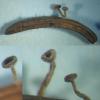
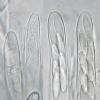
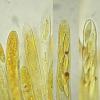
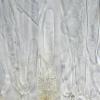
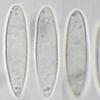
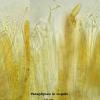
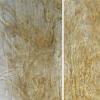
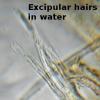
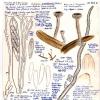
 Baral-Gminder-amp-Svrcek-1995-Pubigera-0001.pdf
Baral-Gminder-amp-Svrcek-1995-Pubigera-0001.pdf